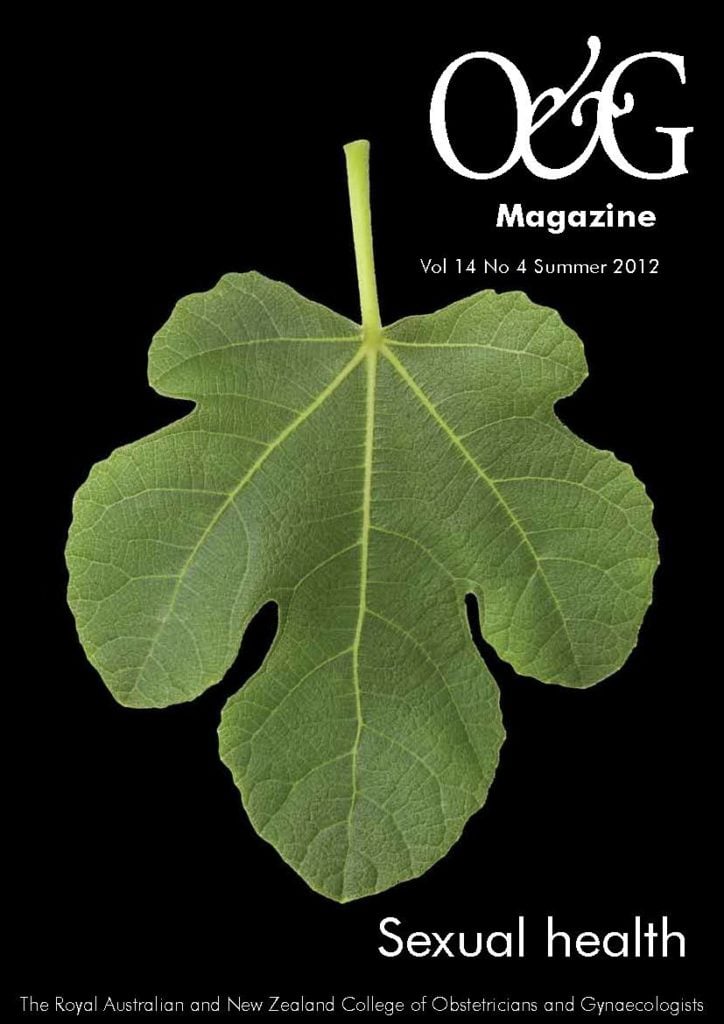Treatment options for women presenting with herpes simplex virus infections during pregnancy focus on preventing transmission to the fetus and neonate.
The herpes simplex viruses (HSV-1, HSV-2) are two of the eight herpes viruses that naturally infect humans (the others being VZV, EBV, CMV, HHV-6, HHV-7, HHV-8). They all establish permanent latency after primary infection and have the potential for reactivation of active or ‘lytic’ infection. In the case of the herpes simplex viruses, latent infection occurs in the ganglia of sensory neurons and lytic infection generally involves mucocutaneous tissues, but occasionally disseminates to involve the viscera. In addition to episodic lytic infection, periods of asymptomatic shedding occur with the potential to infect others while clinically well. HSV-1 is classically associated with orolabial infection and HSV-2 with genital infection, however, HSV-1 has become an increasingly common cause of genital herpes in recent decades – this does not influence management of HSV infection in pregnancy.
HSV transmission and epidemiology
In Australia, the seroprevalence of HSV-2 is 16 per cent in adult women.1 However, as HSV-1 now accounts for more than 35 per cent of genital herpes in Australia2, the prevalence of genital herpes is presumably higher. Genital HSV-1 infections are associated with less frequent recurrences than HSV-2, but a higher risk of transmission to the neonate in the setting of viral shedding at delivery. The majority of neonatal HSV infection in Australia is caused by HSV-1.3
Unlike many sexually transmitted infections, genital HSV transmission occurs more commonly in long-term relationships than casual encounters, with a mean time to transmission of three months in HSV-2 serodiscordant couples. Transmission frequently occurs from a partner without symptomatic genital lesions. Condom use, chemoprophylaxis of a seropositive partner and abstinence when active lesions are present can significantly reduce the risk of transmission. Complete abstinence in the third trimester has been suggested as the safest option where there is known discordance.
Neonatal herpes infection
The incidence of neonatal HSV disease is low at 3/100 000 live births4, measures to reduce the risk of neonatal transmission are summarised in Table 1. North American data suggest the absolute risk is higher for the offspring of seronegative women entering pregnancy compared to seropositive women. This is because, although relatively few women will acquire a primary HSV infection during pregnancy, the risk of transmission to the neonate is much higher: up to 50 per cent for those with primary infection in the third trimester. This contrasts with a rate of neonatal transmission of less than 0.1 per cent from asymptomatic seropositive women.5
Over 90 per cent of neonatal herpes is acquired at the time of delivery through contact with HSV-infected secretions. Intrauterine infection is very rare, but may result in chorioamnionitis, intracerebral calcifications and birth defects. A small number of cases are acquired postnatally (including from healthcare workers and other family members with asymptomatic orolabial shedding). Untreated, herpes infection in the neonate frequently disseminates to involve the central nervous system with a very high mortality and morbidity, including permanent neurological sequelae. Importantly, half of infected neonates lack skin manifestations, potentially making early diagnosis difficult.
Table 1. Measures to reduce the risk of neonatal HSV infection.
| Setting | Scenario | Preventative measures |
| Antenatal | Seronegative women with a partner that has a history of genital herpes | Condom use, suppressive antivirals for the partner; abstinence when symptomatic; and complete abstinence in the third trimester |
| Women with recurrent symptomatic genital HSV | Suppressive antivirals from week 36 (or earlier if dictated by symptoms) and follow-up of neonate | |
| Intrapartum | Active genital herpes lesions ROM <6 hours; primary HSV infection during pregnancy; primary HSV diagnosed in labour; failure to seroconvert well prior to delivery following primary infection in the first or second trimesters; or primary HSV infection during the third trimester | Caesarean and follow-up of neonate |
| Seroconversion well before delivery; or history of genital herpes and no active lesions on genital exam | Vaginal delivery; avoid fetal scalp electrodes, forceps or vacuum delivery; follow-up of neonate | |
| Vaginal delivery through a birth canal with active lesions or following primary genital herpes in the third trimester | Empiric IV aciclovir for neonate | |
| Postnatal | Orolabial herpes lesion (‘cold sore’) or herpetic whitlow | Avoid direct contact of lesion with neonate; hand hygiene |
Herpes in pregnancy
Overall the clinical manifestations of genital herpes are similar in pregnant and non-pregnant women; however, the recurrence rate tends to be higher later in pregnancy. It is possible for maternal visceral dissemination to occur, even in non-primary infection, though this is rare. The most concerning clinical consequence of genital HSV infection in pregnancy is the potential to infect the neonate.
Primary genital HSV infection during pregnancy
If a new HSV infection is clinically suspected during pregnancy, laboratory confirmation is required. Ideally active lesions are still present at the time of presentation and a swab for viral PCR can be collected as well as type-specific serology. PCR positivity for a HSV type for which IgG is negative suggests a primary genital HSV infection. Regardless of whether there is PCR confirmation, serial serology should be obtained to confirm seroconversion. This both supports the diagnosis of primary infection and demonstrates circulating protective antibody.
The timing of seroconversion is important in assessing risk of neonatal infection and management of delivery. Seroconversion in the first two trimesters reduces the rate of intrapartum transmission to less than three per cent and vaginal delivery is considered safe in the absence of active lesions. If primary infection occurs in the last four to six weeks of gestation, seroconversion is unlikely to occur before delivery and caesarean is indicated.
It is recommended that primary infection during pregnancy is treated with antivirals for the remainder of gestation, but a consequent reduction in the rate of transmission is unproven.
Recurrent genital HSV infection and pregnancy
In women with a history of genital HSV infection prior to pregnancy, circulating IgG is present. The risk of transmission is much lower and depends on the presence of active lesions at the time of delivery. If present, the risk of transmission is two to five per cent. If asymptomatic, there is a one to two per cent chance of viral shedding at the time of delivery and a 0.02 per cent chance of neonatal infection. Therefore, women with a history of genital HSV should have a careful speculum examination when presenting in labour. If herpetic lesions are identified, caesarean section is the preferred mode of delivery and has been demonstrated to reduce the risk of neonatal HSV infection.6 If membranes have been ruptured for more than six hours, Australian guidelines suggest proceeding with vaginal delivery.4
Although the risk of transmission is influenced by viral shedding at delivery, in practice, current diagnostic tests do not allow this information to be available in time to influence decision-making. Further, many research studies stratified transmission risk by isolation by viral culture, which is rarely performed by diagnostic laboratories.
A Cochrane review regarding antiviral prophylaxis in the third trimester in pregnancy concluded that antivirals from week 36 in women with episodic herpes reduced the rate of active lesions at delivery and reduced the caesarean rate, however, the influence of antiviral therapy on the rate of neonatal HSV infection could not be determined.7 Neonatal infection may occur in spite of maternal antiviral therapy.8
Antivirals in pregnancy
Aciclovir is a deoxyguanosine analogue that blocks viral DNA synthesis. Because the cellular uptake and phosphorylation of aciclovir is facilitated by HSV thymidine kinase, the drug is very selective for HSV-infected cells: the active aciclovir triphosphate form is present in HSV-infected cells at 100-fold concentrations compared to non-infected cells. These drugs generally have a very favourable side-effect profile, but neurotoxicity and nephrotoxicity do rarely occur.
Valaciclovir is a valyl-ester pro-drug that is rapidly converted to aciclovir after absorption. It has a vastly improved oral bioavailability, which translates to a more convenient dosing regimen. Further, the cost of valaciclovir has significantly fallen in recent years.
Aciclovir and valaciclovir are classified as pregnancy category B3 because in animal studies using very high doses teratogenic effects were seen.9 However, data from pregnancy registries and a large population cohort study of over 800 000 live births in Denmark could not demonstrate any difference in major birth abnormalities compared to the expected rate.9 In the latter study there were over 1000 babies exposed to aciclovir antenatally and 181 exposed to valaciclovir. In spite of the lack of completely conclusive evidence, aciclovir and valaciclovir are widely perceived as safe in pregnancy and widely used in pregnancy, however antiviral prescriptions in this setting should be accompanied by information on the caveats with current safety data.
When used, aciclovir should be given at a dose of 400mg three times a day for five days for active lesions, or 400mg twice daily for suppression in late pregnancy (200mg twice daily in early pregnancy). Valaciclovir is dosed at 500mg twice daily for three to five days for active lesions or 500mg daily for suppression. Higher doses are used to treat primary infection.
References
- Cunningham AL, Taylor R, Taylor J et al. Prevalence of infection with herpes simplex virus types 1 and 2 in Australia: a nationwide population based survey. Sex Transm Infect. 2006 Apr;82(2):164-8.
- Haddow LJ, Dave B, Mindel A et al. Increase in rates of herpes simplex virus type 1 as a cause of anogenital herpes in western Sydney, Australia, between 1979 and 2003.
- Sexually Transm. Infect. 2006 June 1, 2006;82(3):255-9.
Yvonne A Zurynski DM, Elizabeth J Elliott. Australian Paediatric Surveillance Unit Annual Report, 2007. Communicable Diseases Intelligence. 2008;32(4). - Australasian Society of Infectious Diseases. Management of Perinatal Infections: ASID; 2002.
- Mandell G, Bennet J, Dolin R, editors. Mandell, Douglas, and Bennett’s Principles and Practice of Infectious Diseases. Seventh Edition ed. Philadelphia: Churchill Livingstone; 2010.
- Brown ZA, Wald A, Morrow RA et al. Effect of serologic status and cesarean delivery on transmission rates of herpes simplex virus from mother to infant. JAMA. 2003 Jan 8;289(2):203-9.
- Hollier LM, Wendel GD. Third trimester antiviral prophylaxis for preventing maternal genital herpes simplex virus (HSV) recurrences and neonatal infection. Cochrane Database Syst Rev. 2008(1):CD004946.
- Pinninti SG, Angara R, Feja KN et al. Neonatal herpes disease following maternal antenatal antiviral suppressive therapy: a multicenter case series. J Pediatr. 2012 Jul;161(1):134-8 e1-3.
- Pasternak B HA. Use of acyclovir, valacyclovir, and famciclovir in the first trimester of pregnancy and the risk of birth defects. JAMA. 2010;304(8):859-66.






Leave a Reply